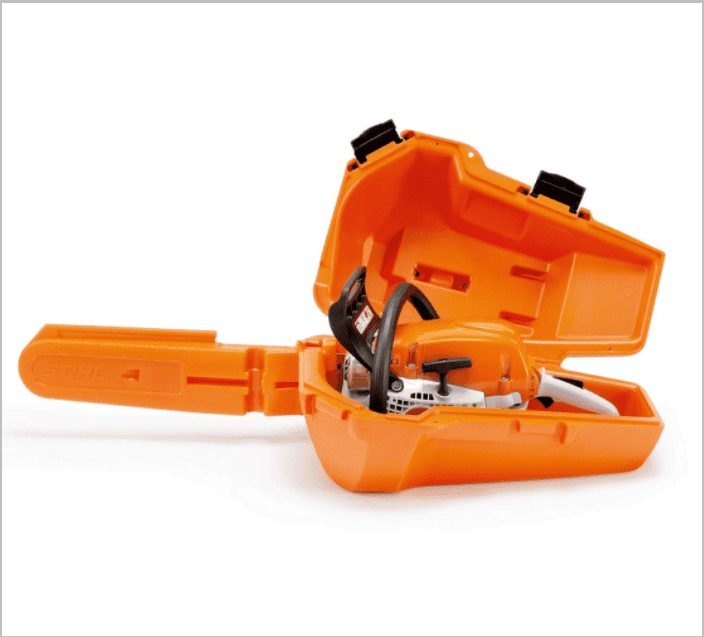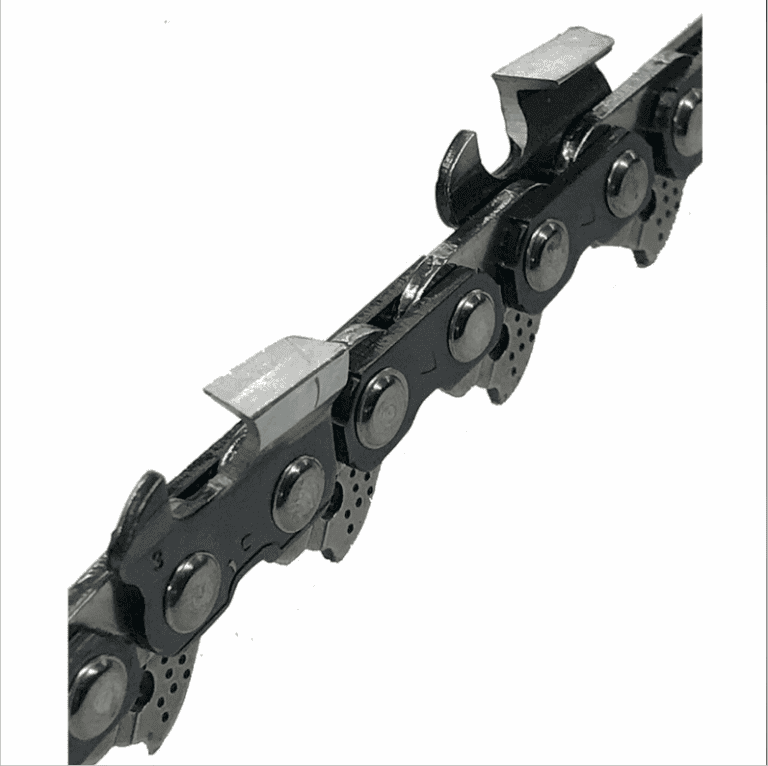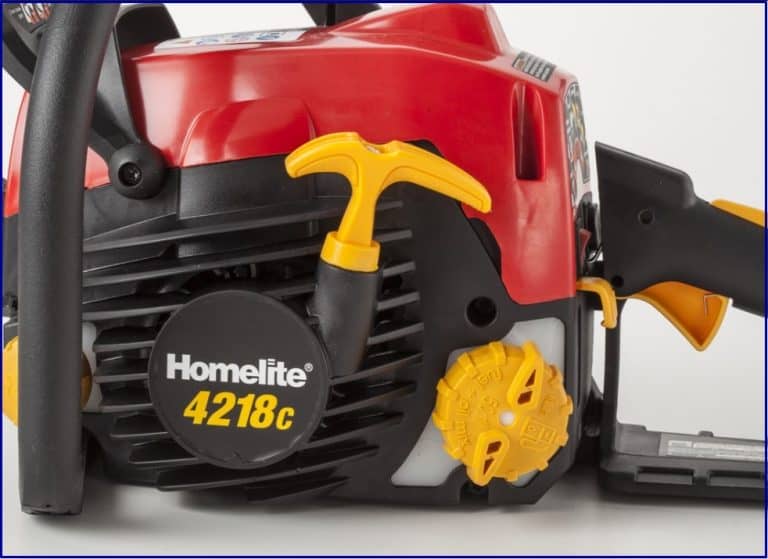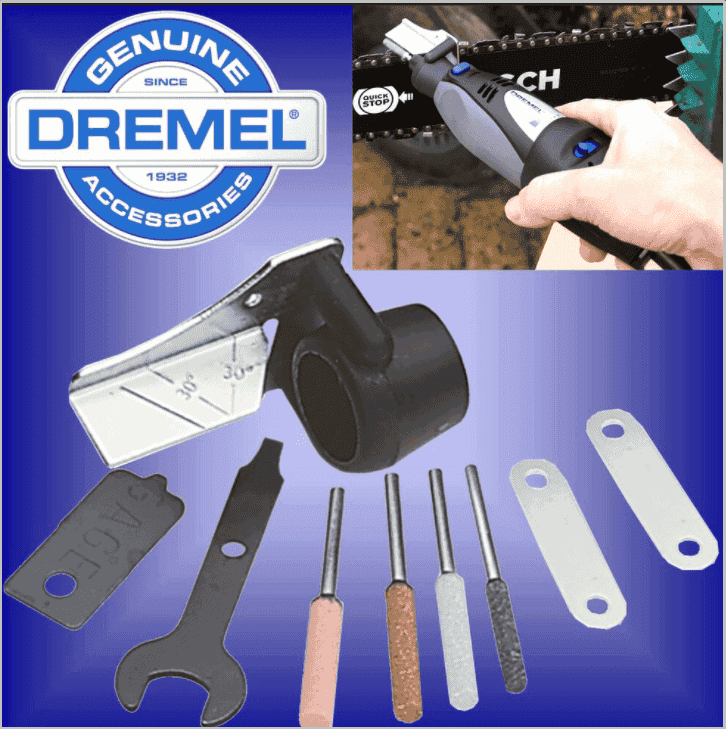
Sharpening a chainsaw with a drill is a convenient and effective method to maintain the cutting efficiency of your chainsaw. This technique utilizes a drill and a specialized sharpening bit to grind the teeth of the chainsaw chain.
Before sharpening, ensure that the chainsaw is unplugged or the battery is removed for safety. Secure the chainsaw chain in a vise or clamp to prevent it from moving during the sharpening process.
Sharpen A Chainsaw with a Drill
Attach the sharpening bit to the drill and adjust the speed to a moderate setting. Hold the drill perpendicular to the chain and align the sharpening bit with the first tooth. Apply gentle pressure and move the drill back and forth along the tooth’s cutting edge. Repeat this process for all the teeth on the chain.
To ensure even sharpening, rotate the chain by one tooth after sharpening each tooth. This will prevent any single tooth from becoming excessively sharpened. Continue sharpening until all the teeth have been ground to the desired sharpness.
After sharpening, remove the chain from the vise or clamp and inspect the teeth. The cutting edges should be sharp and free of any burrs or imperfections. If necessary, use a file or stone to remove any remaining burrs.
Sharpening a chainsaw with a drill is a relatively simple process that can be performed with minimal tools. By following these steps, you can effectively maintain the sharpness of your chainsaw chain, ensuring optimal cutting performance and extending its lifespan.

DIY Chainsaw Sharpening with a Drill
Sharpening a chainsaw is crucial for maintaining its efficiency and safety. While traditional methods involve specialized tools, you can effectively sharpen your chainsaw using a drill. This method is convenient, cost-effective, and accessible to DIY enthusiasts.
Materials Required:
- Chainsaw
- Drill
- Sharpening stone or burr
- Safety glasses
- Gloves
Step 1: Safety Precautions
Before starting, ensure you wear safety glasses and gloves to protect yourself from flying debris. Secure the chainsaw firmly on a stable surface to prevent it from moving during sharpening.
Step 2: Choose the Sharpening Stone
Select a sharpening stone or burr that is compatible with your chainsaw chain. The grit of the stone should be appropriate for the condition of the chain. A finer grit is suitable for light sharpening, while a coarser grit is better for heavily worn chains.
Step 3: Attach the Sharpening Stone to the Drill
Insert the sharpening stone or burr into the drill chuck and tighten it securely. Ensure the stone is aligned perpendicular to the drill bit.
Step 4: Position the Chainsaw Chain
Hold the chainsaw chain taut and position the sharpening stone against the first tooth. The stone should make contact with the top of the tooth, just below the cutting edge.
Step 5: Sharpen the Tooth
Apply gentle pressure and rotate the drill clockwise to sharpen the tooth. Move the stone along the cutting edge, maintaining a consistent angle. Repeat this process for all the teeth on the chain.
Step 6: Check the Sharpening Angle
After sharpening a few teeth, check the sharpening angle using a file guide or a protractor. The ideal angle for most chainsaws is between 25 and 35 degrees. Adjust the drill angle as necessary to achieve the desired sharpness.
Step 7: Remove Burrs
Once the chain is sharpened, use a file or a burr remover to remove any burrs or rough edges from the teeth. This will ensure a smooth and efficient cut.
Step 8: Lubricate the Chain
Apply a thin layer of chain lubricant to the sharpened chain. This will reduce friction and extend the life of the chain.
Tips:
- Use a cordless drill for greater maneuverability.
- Sharpen the chain regularly to maintain its performance.
- If the chain is heavily damaged or worn, it may be necessary to replace it.
- Always follow the manufacturer’s instructions for your specific chainsaw model.
By following these steps, you can effectively sharpen your chainsaw using a drill, ensuring it remains sharp and ready for use.
Sharpening a Chainsaw with a Cordless Drill
Sharpening a chainsaw with a cordless drill is a convenient and effective method to maintain the cutting efficiency of your chainsaw. This technique is particularly useful when you are away from a power source or in remote locations. Here’s a step-by-step guide to help you sharpen your chainsaw with a cordless drill:
- Safety First: Always wear appropriate safety gear, including gloves, eye protection, and earplugs, when working with a chainsaw. Ensure that the chainsaw is turned off and disconnected from the power source before starting the sharpening process.
- Secure the Chainsaw: Clamp the chainsaw securely to a stable surface using a vise or a sturdy workbench. This will prevent the chainsaw from moving while you are sharpening it.
- Choose the Right Drill Bit: Select a round file drill bit that matches the diameter of the chainsaw teeth. The most common sizes are 3/16 inch and 7/32 inch.
- Attach the Drill Bit: Insert the drill bit into the cordless drill and tighten it securely. Ensure that the drill bit is properly aligned with the center of the chainsaw teeth.
- Sharpen the Teeth: Hold the drill perpendicular to the chainsaw teeth and apply gentle pressure. Move the drill slowly along the length of the tooth, following the original angle of the cutting edge. Repeat this process for all the teeth on the chainsaw chain.
- Check the Depth Gauge: After sharpening the teeth, check the depth gauge, which is the small metal tab located behind each tooth. If the depth gauge is too high, it will prevent the chainsaw from cutting efficiently. Use a flat file to lower the depth gauge to the recommended height, which is typically 0.025 inches.
- Clean the Chain: Once you have sharpened all the teeth and adjusted the depth gauge, clean the chainsaw chain thoroughly using a brush or compressed air. This will remove any metal shavings or debris that may have accumulated during the sharpening process.
- Lubricate the Chain: Apply a thin layer of chainsaw oil to the chain to lubricate it and prevent premature wear.
By following these steps, you can effectively sharpen your chainsaw with a cordless drill, ensuring optimal cutting performance and extending the life of your chainsaw. Remember to sharpen the chainsaw regularly, especially after heavy use or when the cutting efficiency decreases.
Sharpening a Chainsaw Chain with a Drill
Sharpening a chainsaw chain with a drill is a convenient and effective method to maintain the cutting efficiency of your chainsaw. This technique utilizes a drill and a specialized sharpening attachment to grind the teeth of the chain, restoring their sharpness.
Before commencing, ensure that the chainsaw is disconnected from its power source and the chain is removed. Secure the chain in a vise or clamp to prevent it from moving during the sharpening process.
Attach the sharpening attachment to the drill. These attachments typically consist of a grinding wheel or stone mounted on a shaft that fits into the drill chuck. Select the appropriate grinding wheel for the type of chain you are sharpening.
Position the grinding wheel against the first tooth of the chain. Hold the drill steady and apply gentle pressure as you move the grinding wheel along the cutting edge of the tooth. Maintain a consistent angle and avoid excessive pressure, as this can damage the tooth.
Continue sharpening each tooth in the same manner, ensuring that the grinding wheel contacts the entire cutting edge. Once all the teeth on one side of the chain are sharpened, flip the chain over and repeat the process on the other side.
After sharpening, inspect the teeth to ensure they are evenly ground and free of burrs. If necessary, use a file or stone to remove any remaining burrs or imperfections.
Lubricate the chain with a suitable chainsaw oil to reduce friction and extend its lifespan. Reinstall the chain on the chainsaw and adjust the tension according to the manufacturer’s instructions.
Sharpening a chainsaw chain with a drill is a relatively simple and straightforward process that can significantly improve the performance of your chainsaw. By following these steps and using the appropriate tools, you can maintain the sharpness of your chainsaw chain and ensure its optimal cutting efficiency.
Sharpening a Chainsaw Blade with a Drill
Sharpening a chainsaw blade with a drill is a convenient and effective method to maintain the cutting efficiency of your chainsaw. This technique utilizes a drill and a specialized sharpening attachment to grind the teeth of the chainsaw chain.
Before commencing, ensure that the chainsaw is unplugged or the battery is removed for safety. Secure the chainsaw in a stable position, preferably on a workbench or a sawhorse. Wear appropriate safety gear, including gloves and eye protection.
Attach the sharpening attachment to the drill. These attachments typically consist of a grinding wheel or a burr that is designed to match the specific pitch and profile of the chainsaw chain. Select the appropriate attachment for your chainsaw model.
Position the drill perpendicular to the chainsaw chain. Align the grinding wheel or burr with the first tooth to be sharpened. Apply gentle pressure and rotate the drill clockwise to grind the tooth. Hold the drill steady and maintain a consistent angle throughout the sharpening process.
Continue sharpening each tooth in a clockwise direction, following the original angle of the teeth. Avoid excessive grinding, as this can weaken the teeth and reduce their lifespan. Aim to remove only a small amount of material from each tooth, just enough to restore its sharpness.
Once all the teeth on one side of the chain have been sharpened, flip the chainsaw over and repeat the process on the other side. Ensure that the teeth on both sides are sharpened to the same length and angle.
After sharpening, inspect the chain for any burrs or rough edges. Use a file or a stone to smooth out any imperfections. Lubricate the chain with a suitable chainsaw oil to prevent corrosion and ensure smooth operation.
Sharpening a chainsaw blade with a drill is a relatively simple and straightforward process. By following these steps carefully, you can effectively maintain the sharpness of your chainsaw and ensure optimal cutting performance.






